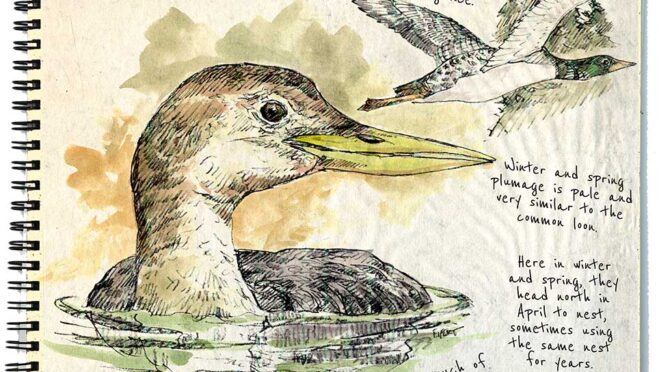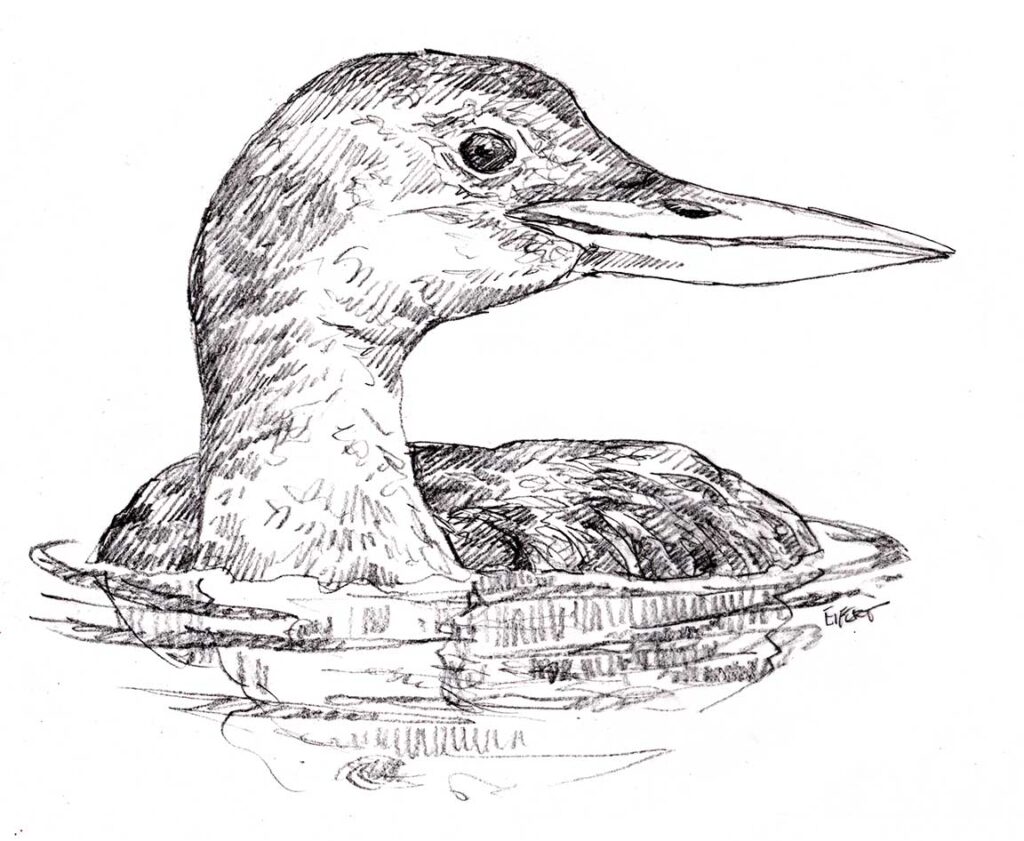Growing up deep in ‘civilization’, I spent much time wishing to be in a wilderness somewhere, anywhere, and hearing the sounds of loons, owls and ravens. I still do that, but at least now I can get out there on a regular schedule. It’s important to me, and as life continues, the thrill of immersing myself in wildness is heightened by learning about it – and painting it. For me, loons are the embodiment of wild places, even if they aren’t exactly there when I see them. I saw one of these yellow-billed beauties recently off Port Townsend and was mentally transported, instantly, to a deep cove in Northern British Columbia, complete with grizzly tracks along the shoreline as they were being filled by a rising tide. I breathed the salt-saturated air, heard the peepers along the shore in a marsh, heard the loon’s mate calling out their ‘crazy laugh’, a tremolo no one never forgets.
Yellow-billed loons are the largest and heaviest loon, and difficult to identify in winter. Don’t use my painting to decide if what you’re seeing is a common loon or not. None are here in summer, but during winter and spring, these birds come to escape the harsh winters before returning in April to nest in the high arctic. There, both parents build a floating nest mound of muddy tundra vegetation along a lake’s shoreline and both incubate the eggs. The two chicks sometimes ride on their parent’s backs, even while diving for fish. Summer plumage changes them to dramatic black and white patterns that look like a broken diamond necklace that has been tossed at the bird, scattering all over its neck and back. They can be seen around the Salish Sea during April as they prepare to fly north for the summer.
Larry Eifert paints and sails the Pacific Northwest from Port Townsend. His large-scale murals can be seen in many national parks across America, and at larryeifert.com.


